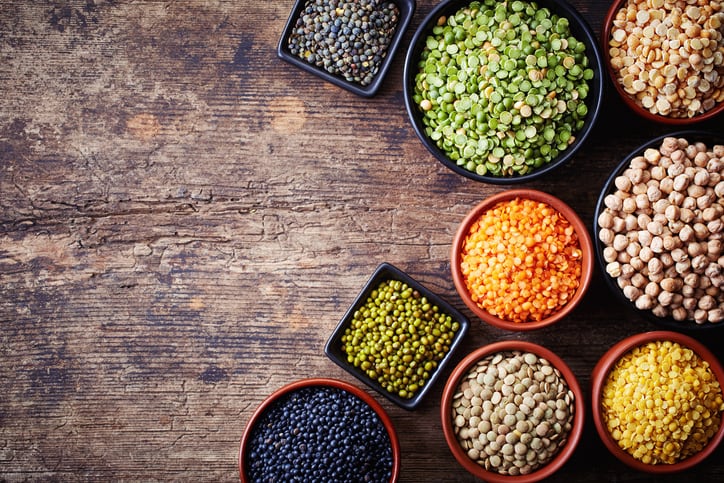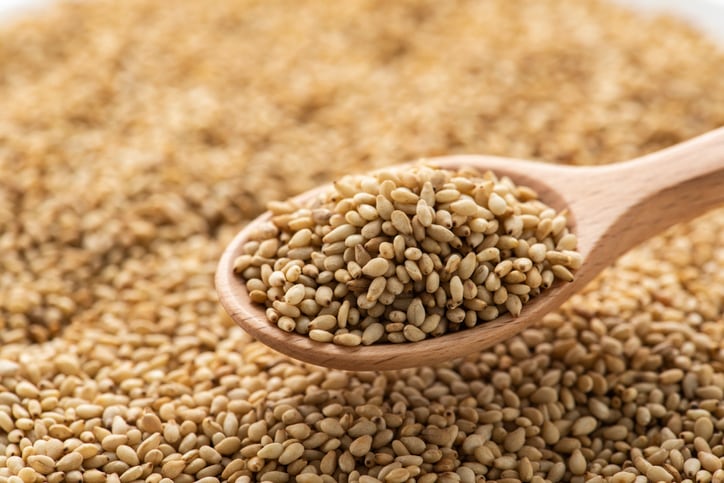So says Adam Janczuk, the vice president of global R&D at IFF Nourish Division, which is International Flavors & Fragrances Inc (IFF)’s newly combined and largest food and beverage division.
IFF’s Nourish Division, created by the mega-merger at the beginning of this year between IFF and DuPont’s Nutrition and Biosciences business, has an increased focus on alternative proteins and offering a wide variety of products to help its customers produce beverage, dairy and meat-alternative products.
Janczuk told FoodNavigator that IFF is looking beyond the biggest agricultural sources of protein such as soy and pea and wants to explore in the long term the realms of fermentation and cellular agriculture to discover ‘next generation’ ingredients in the meat and dairy-free space.
"We have a pretty large footprint in the big plant proteins such as soy and pea,” he told us. “That's core to our business. But we're looking beyond that to look at what are the next generation of [alternative] proteins.”
Innovation in alternative proteins is being driven by consumer demand for more choice, he explained. "What's exciting about this area is that the format and the choices are now more compelling than 10 years ago,” he said. “If somebody wanted an alternative to an animal-based product, there was a lot of compromise not only on the way it looked and tasted but also its nutritional value. In most cases it just wasn't quite there, so that evolution has been more of a revolution really.
“The exiting part now is how more compelling this choice is going to be for the consumer. That's where I think the next generation of improvements is and that compelling element will be variety in formats for every meal.”
Today's consumers, he explained, are not out to avoid meat or dairy, they want alternative food and beverages that offer a delicious eating experience that's on a par with animal-based food in terms of taste, texture and price. Exploring texture will ignite the next generation of products and will leverage formats beyond mimicking. People are also very conscious of health now and of where their protein comes from, he said. “They're starting to look at what are the anti-nutriionals and the [essential] amino acid profiles. They’re asking, ‘how digestible is this for me’? Not limiting our formats by trying to resemble animal-based products, will enable us to create healthier options
Plant-based protein portfolios therefore need to quickly adapt to “satisfy that basic consumer desire for a delicious and healthy choice”.
“People want freedom of choice and if you give something that has a compelling argument than they'll gravitate towards that. I don't see this as a fight against animal producers, but up until now there wasn't a strong alternative."
Moving beyond soy
What ingredients is the company most excited by? The discussion beyond the ubiquitous soy is particularly exiting, he told us. "Soy is very established. You can grow it everywhere; people are very familiar with it. It's a top source of [essential] amino acids. It has a lot of positive things. But again, people want to see that variety. So for me I think things like canola, sunflower and quinoa are the ones that are beginning to excite me.”
These ingredients may not contain all essential amino acids in themselves. But he expects more innovation in blending different types proteins so consumers can get a high nutritional value without compromising the eating experience from these products.
The fermentation space is thriving
IFF is also thinking beyond plant-based into the realms of fermentation - a type of biotechnology that uses microrganisms to create a chemical change that can produce food ingredients.
Fermentation, he said, offers a number of benefits to food producers including sustainability, health and product performance.
It further offers opportunities to shorten supply chains. This will do two things: improve the environmental credentials of these ingredients and potentially help bring down costs for producers and end-consumers.
“Fermentation brings the supply chain to where you build out the equipment and bring in common raw materials to get you that quality protein,” explained Janczuk. “It can also give you accessibility to markets that you can't easily get to… but there needs to be an understanding that in order to get to those efficiencies the organism may need to be different [or Engineered].”
From frozen to fresh
Variety in terms of format is therefore another area offering scope for innovation. He believes there's going to be a desire to move away from your typical burgers, nuggets and meatballs as vehicles for alternative protein consumption.
"It will need to get more creative," he said. "Does my plant-based product need to look like a T-Bone? I'm not sure. I believe the format needs to still look somewhat familiar to consumers.” He therefore envisions more room for shelf stable and workable fresh plant-based ingredients sold to consumers in a format that they can prepare in their homes.
"There's going to be a desire to evolve the format from frozen to fresh so the consumer can take it home in a raw, fresh format and prep it in their own way and add their own flare like they would any other food ingredient.
"From our standpoint, being able to develop formulated product ingredients that get closer to what you can do in a kitchen is probably the ultimate goal."
"I don't see these sources of [alternative] protein competing with one another,” he added. “The world's population is expected to increase by 2 billion persons in the next 30 years. You're not going to be able to feed everybody with one source of protein. So all of these will have their home and they'll connect with the consumers that are looking for where those connect with either their nutritional, health, enjoyment or ethical goals."
Balancing innovation with taste, texture and nutrition
Innovation brings trade-offs though and challenges such as masking off-notes and striking the balance between functionality, taste and texture. “Inheritably, every time you go to a new source of food there's going to be the trade-off and how can we fix those trade-offs in masking and modulation is a core part of how we're going to evolve the format,” Janczuk revealed.





